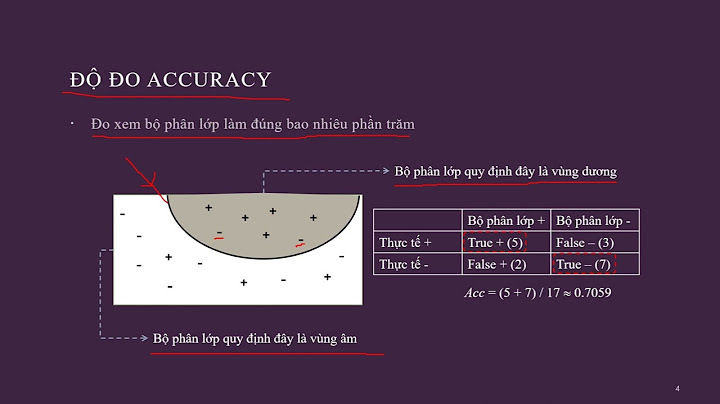Kazuo Ishiguro’s “Never Let Me Go” (Knopf; $24) is a novel about a young woman named Kathy H., and her friendships with two schoolmates, Ruth and Tommy. The triangle is a standard one: Kathy is attracted to Tommy; Tommy gets involved with Ruth, who is also Kathy’s best friend; Ruth knows that Tommy is really in love with Kathy; Kathy gets Tommy in the end, although they both realize that it is too late, and that they have missed their best years. Their lives are short; they know that they are doomed. So the small betrayal leaves an enormous wound. As is customary with Ishiguro, the narrator, Kathy, is ingenuous but keenly desirous of telling us how it was, the prose feels self-consciously stilted and banal, and the psychology is not deep. The central premise in this book is basically the same as that in the book that made Ishiguro famous, “The Remains of the Day” (1989): even when happiness is standing right in front of you, it’s very hard to grasp. Probably you already suspected that. Show It is always a puzzle to know where Ishiguro’s true subject lies. The emotional situation in his novels is spelled out in meticulous, sometimes comically tedious detail, and the focus is entirely on the narrator’s struggles to achieve clarity and contentment in an uncoöperative world. Ishiguro is expert at getting readers choked up over these struggles—even over the ludicrous self-deceptions of the butler in “The Remains of the Day,” the hopeless Stevens. But he is also expert at arranging his figurines against shadowy and suggestive backdrops: post-fascist Japan, in “A Pale View of Hills” (1982) and “An Artist of the Floating World” (1986); an unidentified Central European town undergoing an indeterminate cultural crisis, in “The Unconsoled” (1995); Shanghai at the time of the Sino-Japanese War, in “When We Were Orphans” (2000). It seems important to an understanding of “The Remains of the Day” that the man for whom Stevens once worked, Lord Darlington, was a Fascist sympathizer. But it is not particularly important to Stevens, who has no political wisdom, and who is, in any case, preoccupied with enforcing his own regimen of emotional repression. The shadowy backdrop in “Never Let Me Go” is genetic engineering and associated technologies. Kathy tells her story in (the novel says) “England, late 1990s,” so the book seems to belong to the same genre as Philip Roth’s “The Plot Against America,” counterfactual historical fiction. Conditions in this brave-new-world Britain, and exactly how Kathy and her friends fit into them, are all spooky authorial surprises, and (as is the case with most things) when you’re reading the novel it is best to begin without too many prior assumptions. Kathy is a “carer”; her patients give “donations,” occasionally as many as four. Inch by inch, the curtain is lifted, and we see what these terms mean and why the world is this way. The strangeness, like the strangeness in Ishiguro’s most imaginative novel, “The Unconsoled,” is ingeniously evoked—by means of literal-minded accounts of things that don’t quite add up—and teasing out the hidden story is the main pleasure of the book. In “The Unconsoled,” the story is never fully sorted out; at the end, we remain in the hall of mirrors. Unfortunately, “Never Let Me Go” includes a carefully staged revelation scene, in which everything is, somewhat portentously, explained. It’s a little Hollywood, and the elucidation is purchased at too high a price. The scene pushes the novel over into science fiction, and this is not, at heart, where it seems to want to be. But where the novel does want to be is even less obvious than usual. Ishiguro is praised for his precision and his psychological acuity, and is compared to writers like Henry James and Jane Austen. In fact, he says that he dislikes James and Austen. He also says that he has never been able to get beyond the first volume of Proust; it’s too dull. On the other hand, although his novels are self-consciously “set,” they are not historical novels, and the facts don’t seem to interest him very much. Ishiguro was born in Japan, but his parents moved to England with him when he was five. He cannot speak Japanese very well; he has not expressed any particular admiration for Japan or its culture; and he set his first two novels in Japan without revisiting the country. He appears to have done some research for “When We Were Orphans”; but in “Never Let Me Go,” even after the secrets have been revealed, there are still a lot of holes in the story. This is not because things are meant to be opaque; it’s because, apparently, genetic science isn’t what the book is about. Ishiguro does not write like a realist. He writes like someone impersonating a realist, and this is one reason for the peculiar fascination of his books. He is actually a fabulist and an ironist, and the writers he most resembles, under the genteel mask, are Kafka and Beckett. This is why the prose is always slightly overspecific. It’s realism from an instruction manual: literal, thorough, determined to leave nothing out. But it has a vaguely irreal effect. Beckett’s subject, too, was happiness, and, though Ishiguro’s characters seem so earnestly respectable, they have the same mad, compulsive, quasi-mechanical qualities that Beckett’s do. There is something animatronic about them. They are simulators of humanness, figures engineered to pass as “real.” What it means to be really human is always a problem for them. Can you just copy other people? Would that take care of it? “I have of course already devoted much time to developing my bantering skills,” Stevens explains at the end of “The Remains of the Day,” “but it is possible I have never previously approached the task with the commitment I might have done.” Genetic engineering—the idea of human beings as products programmed to pick up “personhood skills”—is a perfect vehicle for a writer like Ishiguro. For reasons that belong to the story’s secret, the characters in “Never Let Me Go” all feel obliged to create works of art. Tommy is slower to develop creatively than his schoolmates, and when he starts to make drawings they are pictures of animals. He finally shows them to Kathy: **{: .break one} ** I was taken aback at how densely detailed each one was. In fact, it took a moment to see they were animals at all. The first impression was like one you’d get if you took the back off a radio set: tiny canals, weaving tendons, miniature screws and wheels were all drawn with obsessive precision, and only when you held the page away could you see it was some kind of armadillo, say, or a bird. . . . For all their busy, metallic features, there was something sweet, even vulnerable about each of them. ** The passage almost certainly derives from Henri Bergson’s famous definition of comedy: the mechanical encrusted on the living. The creatures Tommy draws are imagined versions of himself. They are funny and pathetic at the same time, because people behaving like wind-up toys, even when they can’t help it, even when it makes them fall down manholes, make us laugh. This is why Beckett is a comic writer, and it’s why Ishiguro’s novels, though filled with incidents of poignancy and disappointment and cruelty, are also, weirdly, funny. His sad characters can’t help themselves. ♦ What is the main point of the Never Let Me Go?And so Never Let Me Go came into being: the story of three friends who grow up in an enclosed environment, a kind of boarding school, only gradually coming to understand that, parentless and unable to have children themselves, they are not considered to be fully human like the people outside, destined for only very ... What is the message of the book Never Let Me Go?So while we may want to think that what makes the human is something good, like art and emotion, the message of Never Let Me Go is even more bleak than the world it presents – that what makes the human is the willingness to keep others down to continue the status quo. Ishiguro, Kazuo. Is Never Let Me Go book worth reading?Never Let Me Go breaks through the boundaries of the literary novel. It is a gripping mystery, a beautiful love story, and also a scathing critique of human arrogance and a moral examination of how we treat the vulnerable and different in our society. What is the lesson in Never Let Me Go?The Dignity of Human Life Kathy's narrative is ultimately a testament to the dignity and humanity of the students whom she remembers. The students have less time than their counterparts in the outside world, but their lives are as rich with the hopes, joys, disappointments, and sorrows that define human experience. |




















